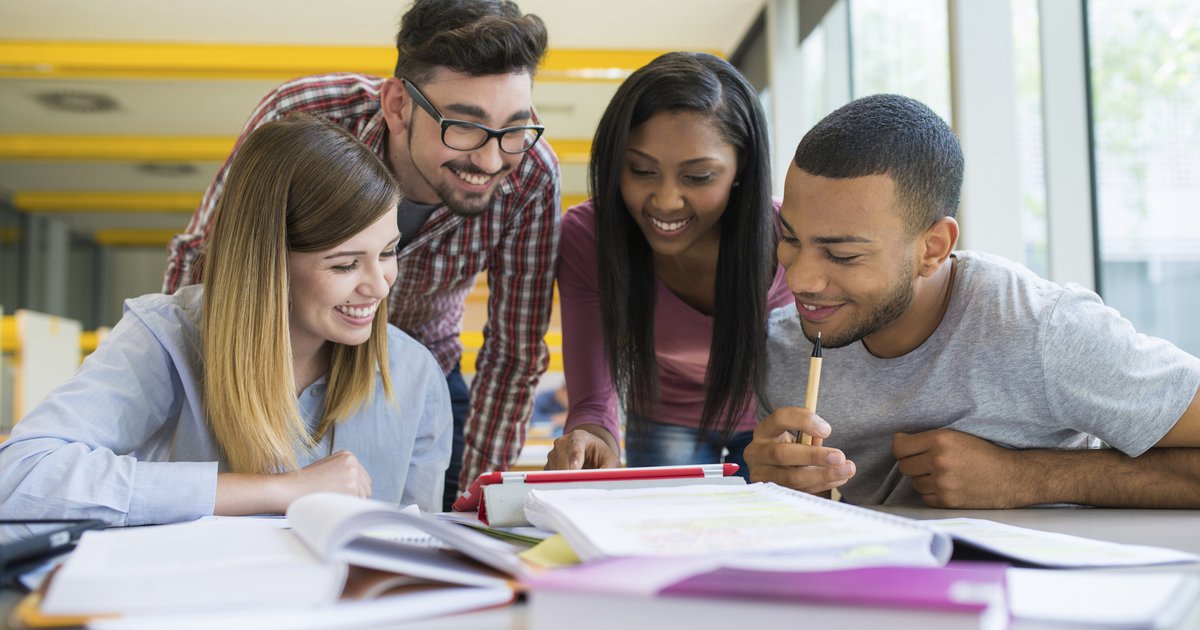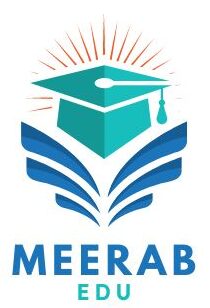Introduction of Education Advocacy

Education advocacy is all about the power of education to transform lives. In the present world, communities grow around it, and individuals develop due to it. This discussion will show how education can affect life and current and future situations.
Section 2: Appreciating the Importance of Education in Society or Education Advocacy

Education serves as a springboard for civilization’s growth by supporting intellectual development, nurturing economic progress and promoting cultural diversity. This breadth makes it so critical for individuals, societies, and nations.
- Economic Prosperity
Formal instruction imparts knowledge that enables people to thrive in contemporary economies. Well-trained workers provide an avenue for innovation, leading to more output and improving economic growth. Additionally, through training, unemployment rates are reduced, besides bridging the income gap by increasing employability.
- Social Cohesion:
Other than fostering understanding between diverse groups and respect for humanity among different ethnic backgrounds so that citizens of various origins can live harmoniously together within peaceable societies whereby cultural diversity may be upheld, learning achieves this end. Also, cultural diversity can be valued by teaching so that members from different cultures feel closer knit into one society.
- Personal Development:
By acquiring an educational background, one can gain knowledge enabling them to achieve their full potential while enjoying a meaningful life on Earth because thinking critically or creatively plus problem-solving skills help us adapt to changing circumstances as well as overcome obstacles along the way when faced with challenges head on luring or drawing attention from students which are mental abilities nurtured by education. Furthermore, schools teach self-discipline, resilience, and persistence, leading to personal development.
- Civic Engagement:
What educates mass populations to enable them to comprehend better how they can actively participate in democratic processes, advocate for human rights, and ensure social justice? A reflection on civic duties coupled with ethical standards makes our society more vibrant, as many disciplines conclude that civic education results in a more vibrant society. Thus, all these facilitate robust democratic institutions.
- Global Competitiveness:
Education is the key to increased global competitiveness and the promotion of international collaboration in a more interconnected world than before. Through education, individuals are equipped with skills for living in other cultures, thinking globally and being part of a wider community. Besides, there can be knowledge-sharing among nations to help address global matters such as poverty, inequality, or climate change through innovation.
In summary, education is a launching pad for developing people, societies or even countries in the 21st century. The importance of this fact cannot be overstated because it shapes lives and defines human destiny. Therefore, investment in this sector is both a moral duty and a matter of necessity that needs to enhance the quality of life on Earth.
Section 3: Main Challenges Facing Education Systems Today or Education Advocacy

However crucial it may be, school systems are constantly faced with numerous problems that considerably bring down their efficiency level on Earth across continents. Certain things that, if not addressed, can never lead to fair access to quality education.
- Access Disparities:
Among other challenges facing education today, there are access disparities in schools, particularly for marginalized areas and developing regions with high poverty levels; sometimes learners might not be able to reach school because of the distance since they live far from them, gender imbalances as well as disability that may hinder children from attending classes thus resulting in persistence inequality among societies.
- Quality Disparities:
However, accessibility does not cover all the ground since even after admitting students into your institution; some can still fail due to low standards or poor quality of teaching offered by such schools. Most schools have no excellent facilities, including a shortage of trained teachers, making learning difficult. This negatively affects pupils’ performance and perpetuates socioeconomic inequalities, undermining education’s transformative potential.
- Problems and issues regarding lack of access to computers:
In this era where everything is digitized, there is an increasing digital divide in education. Variations also exist between students within the same school: while some have cheap technology and a fast internet connection, others struggle without these resources. As a result, the gap between those who can effectively use digital-based learning tools is broadened further. We must bridge the ‘digital divide’ to ensure equal distribution of 21st-century skills and opportunities among every child.
- The problem of quality education:
However, despite efforts made towards increasing enrollment, many children do not learn according to their age brackets (Mullis et al., 2012). Because most cases entail low literacy and numeracy rates alongside inadequate foundational competencies, leading to massive numbers dropping out (Mullis et al., 2012), it calls for better school access and improved learning outcomes to address this learning crisis.
- Insufficient funding:
Lack of enough funds is one major obstacle to providing quality education (Mullis et al., 2012). Due to budget constraints, many education systems allocate little or no funds for infrastructure development, teacher training, designing curricula or procuring teaching and learning materials for students, limiting possibilities of progressive teaching/learning process (GPE Secretariat et al., 2018). Adequate financing, which is shared equally, should enable all learners to acquire knowledge relevant to employability within the 21st century.
- Lack of professionally trained teachers:
Common challenges exist in many countries, such as India and Nigeria, including widespread shortages of qualified and motivated teachers. One reason is that several developing nations where most people live under extreme poverty lines barely pay teachers. Therefore, these poor working conditions and deficient training facilities lead to high staff turnover rates despite initial recruitment improvements (Mullis et al., 2012). Enhancing academic outcomes and thus improving success among all learners calls for investment focused on recruiting educators who will be groomed to meet this need.
- Discrepancies in the curriculum:
The school curriculum needs modifications to become responsive to society’s present given labour market dynamics. However, most have an old-fashioned one that only promotes rote learning instead of critical thinking about issues, creativity and problem-solving abilities (Baumert & Waterman, 2004). It means that introducing changes to the curriculum targeting some skills related to 21st-century competencies will assist in preparing future-oriented learners.
The critical point here is that we need to collaborate and pool our expertise to confront these significant challenges, involving policymakers, educators, civil society, and the international community to build more inclusive and resilient educational systems emphasizing equity, quality and innovation as well as the capabilities of all learners that can endure the fast-changing world.
Section Four: Integration of Technology into Education or Education Advocacy

Technology has revolutionized education by offering opportunities for better delivery methods, learning experiences and performance improvement (Kataliya et al., 2016). This platform allows students to access their flexible schedules anywhere, enabling personalized autonomous learning experiences (K’n’W).
- Interactive Multimedia Resources:
To pique student curiosity and encourage innovative thinking during studies, multimedia resources such as video simulations, games, and virtual reality are used, leading to improved academic performance and aiding children in learning better (OECD 2015). These various multimedia resources have made it harder for some students to understand what they are taught in all subjects, whether science or social studies.
- Adaptive Learning Technologies:
Artificial intelligence-enabled adaptive learning technologies facilitate the customization of training based on individual learner’s preferences or needs. Hence, technology analyses students’ performance data to offer targeted support interventions, remediation, and enrichments to bridge achievement gaps and increase academic achievements (Martin et al., 2016).
- Blended Learning Models:
- Hybrid Learning
It combines traditional face-to-face instruction with online activities, providing a hybrid model that includes the advantages of both forms. Thus, by blending synchronous with asynchronous learning experiences, teachers can optimize instructional time while promoting active learning among the learners, thus fostering autonomy.
- Mobile Learning Solutions:
Mobile devices using smartphones, tablets, or other gadgets become platforms for delivering educational content using mobile learning solutions [1]. Mobile learning has helped open access to education by eliminating space-time constraints for many students with various lifestyles and learning needs.
- Data-driven Decision Making:
It is, therefore, possible to track students’ progress, monitor their involvement and analyze how they study through learning analytics tools applied to technology-enabled educational technologies. Thus, teachers can have a deeper insight into student progress, receive feedback for improvements, and adjust instruction individually (OECD 2015).
- Professional Development Opportunities:
Professional development opportunities offered by technology enable educators to increase their digital literacy, incorporate technology in instructional practices and keep up with emerging trends and best practices related to educational technology. This means that continuous professional development should be done so that instructors make full use of the career potential of technology in support of students’ learning outcomes.
Therefore, the paper examines the strategic approaches for introducing technology in education while maintaining academic efficacy, equality, and data privacy [1]. Teachers can embrace this idea of leveraging technology to create inclusive, innovative experiences to help students excel in life after school [2].
Section 5: Formulating an Inclusive Learning Environment
To ensure students perform better in class as a group, accommodating education areas must be developed for their social and emotional advantage. But inclusion is not only about accessibility but also includes creating a climate of honour, equity and belonging where every student can feel treasured and encouraged.
- Diversity And Representation In Classroom Activities:
Celebrating diversity while promoting representation in inclusive learning environments involves considering the full range of dimensions such as race/ethnicity, culture, language, religion, gender identity or sexual orientation, ability/disability and socioeconomic status. Materials and resources should reflect the students’ identities regarding their own lives/cultivate belongingness and cultural competency.
- Universal Design For Learning (UDL):
Universal Design for Learning (UDL) emphasizes curricula that respond to variations in student abilities/interests/preferences [1]. The concepts of UDL encompass giving different ways for children to understand/new ways to get hooked on subjects and helping them express what they know [1].
- Differentiated Instruction:
Tailoring teaching methods/content/assessment towards particular learning styles/preferences/readiness can be differentiated instruction. Providing multiple instructional paths and scaffolding support also gives choice/flexibility so that a teacher can challenge every pupil according to his proficiency level [2].
- Culturally Responsive Teaching:
Culturally responsive pedagogy values learners’ cultural backgrounds and how they perceive themselves in a learning environment [1]. Teachers use students’ cultural assets to incorporate diverse perspectives into instruction and instil critical consciousness/sympathy for social justice matters in their classrooms [2]. Promoting academic achievement, cultural validation, and mutual respect, amongst other things, is what culturally responsive teaching does.
- Social-Emotional Learning (SEL):
Social-emotional wellbeing precedes academic performance in inclusive learning environments [1]. Schools or settings where children are engaged in inclusive education may demonstrate linkages between mental health and academic accomplishments [2].
For example, in different situations, these characteristics define them as individuals and their success at overcoming the challenges that come with learning.
Section 6 = CPD (Continuous Professional Development):
The teaching profession is very dynamic and thus requires CPD activities like workshops, conferences, e-learning programs or mentoring to help teachers keep up with these changing times.
Innovation in Teaching:
Understanding new ideas by today’s students needs a variety of teaching tactics.
Communities for Collaborative Learning:
Various school, family, and community risk factors determine student achievement.
Opportunities for Teacher Leadership:
In this society driven by a knowledge-based economy, there is a high demand for teacher leadership and innovative practices.
3-5: IMPLEMENTING INCLUSIVE EDUCATION: SUPPORTS AND BARRIERS
3.1 Inadequacy of teachers’ inclusive education training:
Teachers have not been trained enough on how they are supposed to handle exceptional learners.
3.2 Scarce resources:
There are few materials which can be used to teach children with disabilities.
3.3 Attitude & Discrimination Issues:
Most schools believe that disability should be left elsewhere.
It will be possible to build inclusive schools once we start understanding different cultural identities around us in our communities.
Consequently, if we want all students to succeed, we must create a positive classroom environment where UDL methodologies support the educational rights of every child respectively.
Therefore, they should be taught that intelligence can grow through hard work, persistence and making mistakes. Thus, how can teachers improve their teaching methods and assist students in getting better results? The only way out of this is to create an environment wherein risks & adaptation become part of the education process.
- Change Leadership or Mentoring Role
Teachers require both mentorship and supportive leadership to progress professionally. For instance, head teachers guide them towards working together efficiently with others, resulting in improved standards across the board. In non-formal or informal interventions, these new entrants also play the role of mentors, who may give guidance or practical help at specific career points.
7. Implications for Educator’s Wellbeing:
Consequently, educators can be empowered through good working conditions that promote individual growth and professional development. This includes addressing workload challenges, balancing work and personal life, mental health support system, instructor recognition, etc.
Therefore, our education system will include a wide range of learners while empowering all levels of educators involved in this mission. Meanwhile, we will have voted staff who are helpful towards young people from different parts of the country who experience problems.
Section 7: Nurturing Critical Thinkers and Creative Education
Critical thinking & creativity learned in school support change faster because it prepares students to face future challenges (Billings 2012). It also involves skills like critical information analysis, effective problem solving and quicker generation of ideas during transitions.
1. What Is Critical Thinking And Why Is It Important?
To make reasonable judgments, one must process information actively and skillfully as a critical thinker (Ennis 1991). For learners to become good at problem-solving, decision-making, or learning in any discipline (Kurfiss 1988), they must develop critical thinking skills. They challenge assumptions as well as form informed opinions.
2 Techniques for Cultivating Critical Thinking:
In addition, critical thinking in students can be developed by teachers through Socratic questioning, inquiry-based teaching, engaging in peer discussion and PBL models. Therefore, this will promote profound exploration and analysis of reflective knowledge to develop higher cognitive processes such as assessment, inference and metacognition.
3. Merging Creativity into Curriculum
According to Amabile (1996), creativity develops new, practical and suitable ideas. When school programs incorporate creativity instead of being teacher-oriented, students get more motivated and engaged. Some illustrations include project-based instruction and art-infused education design thinking in education creative dramatics.
4. Promoting Convergent Thinking:
Creativity also includes divergent thinking (Guilford 1950). Divergent standpoints can be encouraged among educators via methods like brainstorming, mind-mapping and analogical reasoning. Teachers must create a supportive environment where pupils take chances and experiment with non-traditional ideas.
5. Tolerating Failure And Iteration:
This means embracing failure as a part of creativity while encouraging iterative experimentation and refinement (Sawyer 2006). The best teachers should allow learners to fail without stigmatizing them so that they develop risk-taking tendencies. It would help if one considered redefining unsuccessfulness as a path to discovery, fostering resilience, adaptability, and a growth mindset among learners.
6. Fostering Interdisciplinary Connections:
Creative idea generation grounds at the intersection of different fields or perspectives constitute these meeting points. How do educators attempt to join unrelated disciplines to foster interdisciplinary relationships between subjects? Instructors follow specific steps when building interdisciplinary relationships across subjects: blending unrelated subject matters, addressing real-life situations, and encouraging cross-disciplinary teamwork, among others. A multidisciplinary approach ensures an all-rounded understanding, solves problems differently and combines knowledge from various disciplines.
7. Judging Creativity And Critical Thinking:
Authentic and multifaceted evaluation methods beyond traditional tests are needed to gauge analytical thinking and resourcefulness. Students can be assessed on their ability to think critically, solve problems creatively and communicate effectively through performance-based assessments, portfolios, project presentations, peer evaluations, etc.
Schools try to create lifelong learners who engage creatively with critical thinking and innovate as they face challenges or seek to enhance the societies in which they live. These skills are necessary for academic growth and for preparing learners for today’s world’s complex, uncertain and changing realities.
Conclusion:
Education advocacy is, therefore, crucial in shaping a just and inclusive education landscape. Advocates, therefore, work towards a time when every person has access to quality education” There is an urgent need to push for more equitable policies and initiatives that make education a tool of empowerment and societal transformation. Education advocacy may help us create an equal world.
